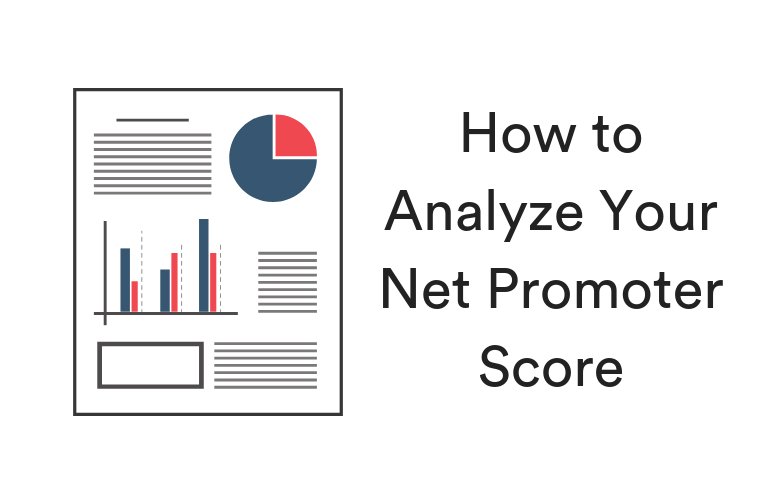
4 Best Ways to Visualize Your Net Promoter Score

So you've done the hard work of analyzing your Net Promotor Score (NPS). That means you're up to the fun part - visualizing!
Before we get into that, a little bit of background before we jump into data analysis specifics. The Net Promoter Score (NPS) is a popular customer feedback metric that indicates how likely people are to promote a particular brand, product, or service to their friends, colleagues, or relatives. It is calculated from responses of people who have been asked to rate their likelihood of recommending the item on a scale of 0 to 10. The respondents are sorted into 3 groups based on their responses: 0 to 6 correspond to detractors, 7 or 8 are passives, and 9 or 10 are promoters. The NPS is simply the percentage of promoters minus the percentage of detractors.
Given a data set of ratings from respondents, there are a number of ways in which this data can be analyzed. I will cover the basic ones here, which involve producing visualizations of the data without needing knowledge of statistics or machine learning. Stay tuned for some more advanced data analysis posts coming!
Pictograph bar chart: Responses by rating
One of the simplest visualizations is to plot the frequency or percentage of the ratings, which range from 0 to 10. This plot provides insight into the distribution of ratings within each promoter group. For example, if there is a concentration of detractors who are 5 or 6, they are more likely to be swayed to become promoters than if most of the detractors gave a rating near 0. I have shown a pictograph bar chart below, but a regular bar or column chart can be used for the same purpose. I have also color-coded the bars by promoter group to make it easier to read the chart.
Learn how to create a Net Promoter Score Pictograph
Stacked bar chart: Responses by promoter group
When we aggregate ratings by promoter group, we lose some detail but gain conciseness and more space to compare ratings of different brands, products, or services. A nice way to do this, is with a stacked bar or column chart, such as the one shown below. We can easily see that Google has the most promoters and the least detractors, while IBM, Intel, HP, Dell, and Yahoo struggle with a lot of detractors and few promoters. This plot shows the size of the passive group relative to the detractors and promoters. If this group is large, there is potential to dramatically improve your NPS by nudging them across to become promoters, and likewise there is a risk that they might become detractors and significantly impact your NPS.
Learn how to visualize NPS benchmarks in Displayr
Grouped bar chart: NPS over respondent categories
The final aggregation step is to compute NPS as the percentage of promoters minus the percentage of detractors. Rather than just calculating one NPS for all the respondents we can look at the NPS over categories of respondents, such as by age, gender, income or other attributes. This allows us to pinpoint which group of customers are more likely to be promoters and which group are more likely to be detractors. We can then act accordingly and figure out why this is the case and what can be done to retain the promoters and convert the detractors and passives. A grouped bar chart is shown below comparing the NPS of Microsoft and Google over different age categories.
Be careful when interpreting the results, as categories with a small number of samples are prone to noise. This can be addressed by merging categories and with statistical testing (see this article). In addition, there may be differences in how people respond to the NPS question captured by the categories, for example people in different countries may tend to give higher or lower ratings on average, all else being equal.
Column chart with trend line: NPS over time
Apart from respondent categories, the response date is another important attribute to be plotted with NPS. This is best done with a column or line chart, where the cases have been aggregated over sufficiently large time periods so that there are enough cases in each period. Some software such as Displayr allow a trend line to be overlaid on top of the chart, which indicates the overall trend of NPS over time (i.e., is NPS going up or down?). This chart also allows us to see what impact events like marketing campaigns and product changes have had on NPS.
Learn how to measure Net Promoter Score over time
Other ways to analyze NPS
There are many other types of charts that can be used to visualize and analyze NPS that I have not shown here, such as heatmaps and scatterplots. Statistical tests can be done to determine if differences in NPS are actually significant. Lastly, various statistical modeling and machine learning techniques can be applied to find factors that can be used to improve NPS, which I will cover in a future article. The charts in this article were created using Displayr. You can try it for free today.





